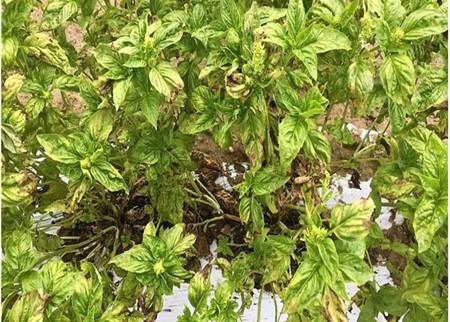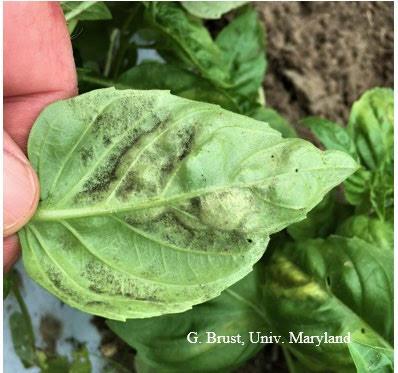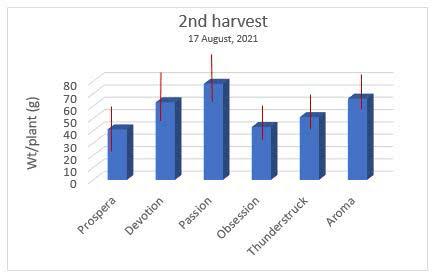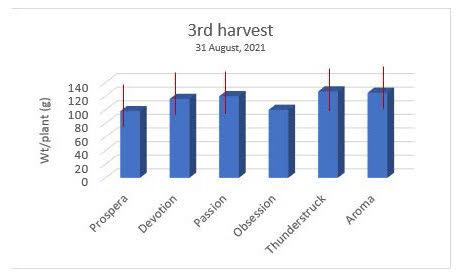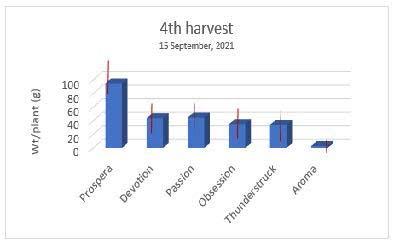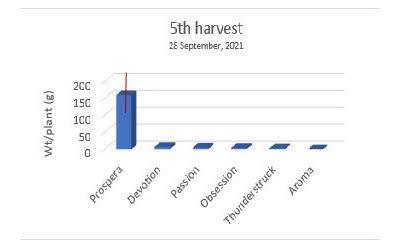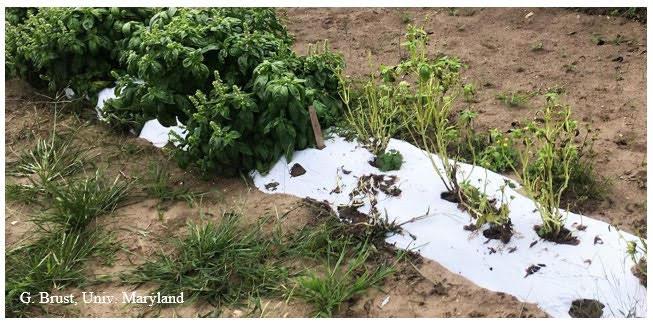Basil Downy Mildew Cultivar Study
Summary: This study examined five cultivars (Passion, Obsession, Devotion, Thunderstruck and Prospera) of basil that are reported to have resistance to basil downy mildew with a susceptible cultivar (Aroma). A field trial was planted in July and harvested throughout the summer and fall. Four of the five cultivars (Passion, Obsession, Devotion and Thunderstruck) became infected with downy mildew at the same time as did the susceptible cultivar (Aroma). In this study only Prospera did not develop downy mildew symptoms. The infected cultivars had significantly reduced marketable yields at first and then no marketable yields 4 weeks after infection. Prospera continued to have good marketable yields throughout the entire study period.
Introduction: Downy mildew of basil is a devastating disease that has plagued growers of the herb for years. It was first reported in the United States in 2007 and has since spread widely to wherever basil is grown. Basil downy mildew is caused by Peronospora belbahrii, a fungus-like microorganism in the group called water molds. This disease affects the leaves, branches, and stems of sweet basil with green-leafed varieties being particularly susceptible. Basil that has become infected with downy mildew has a yellowish appearance that is similar to a nutritional problem. Yellowing of leaves normally first appears on lower areas of the plant (fig. 1).
